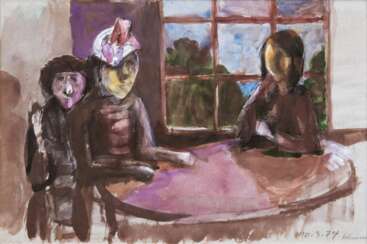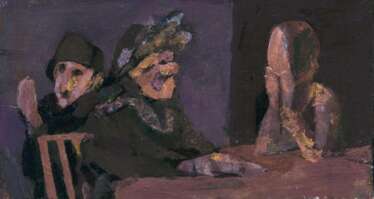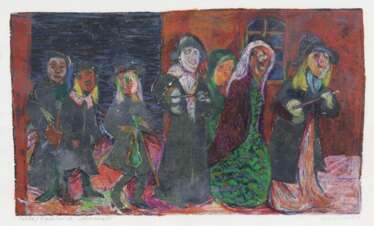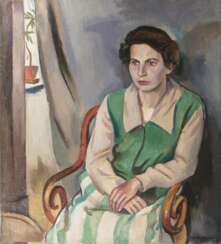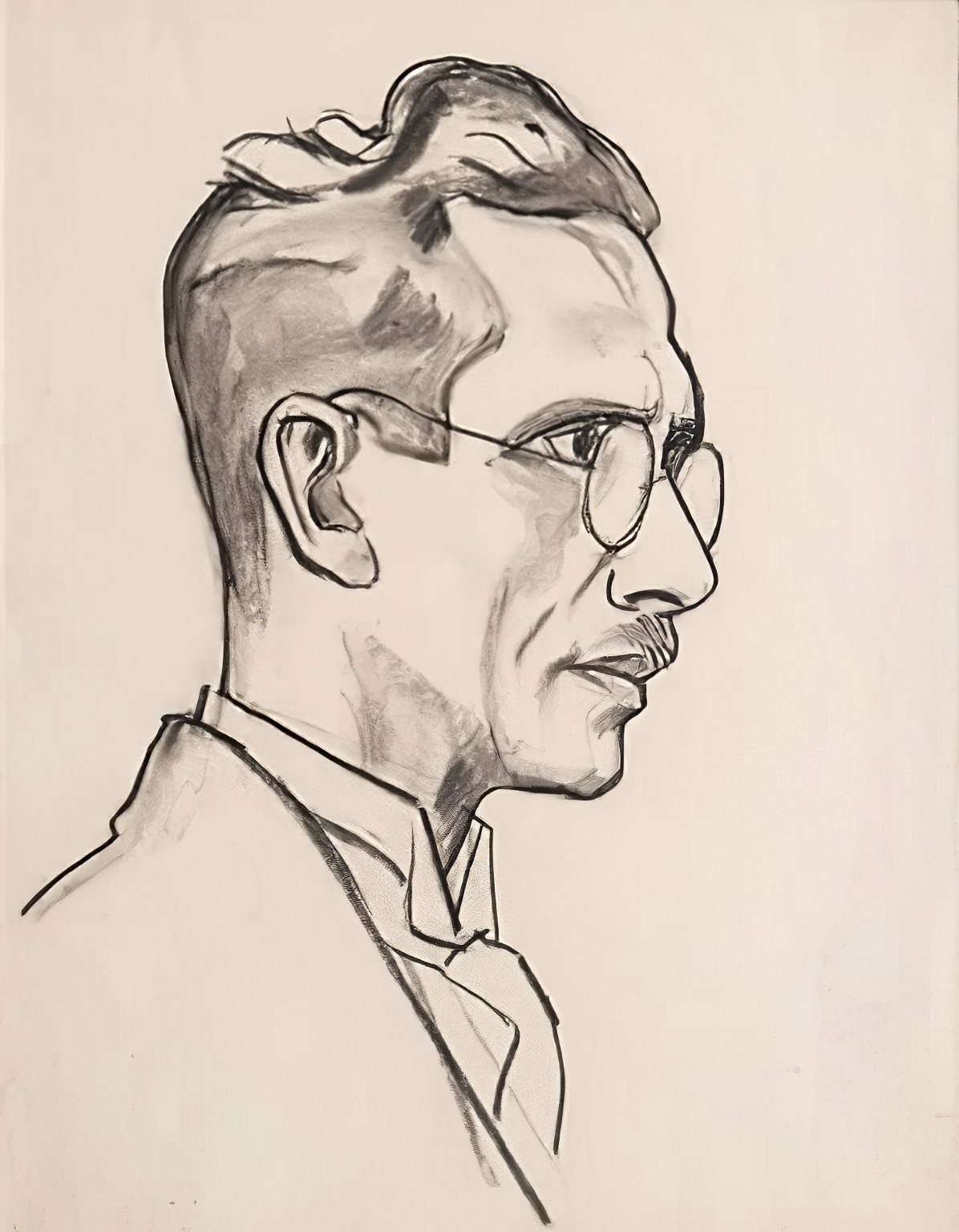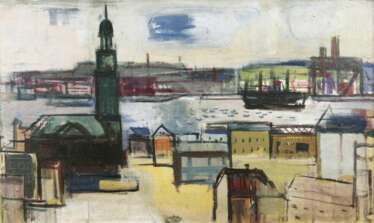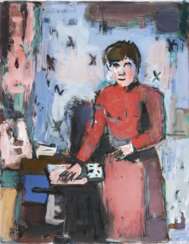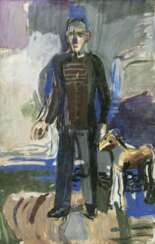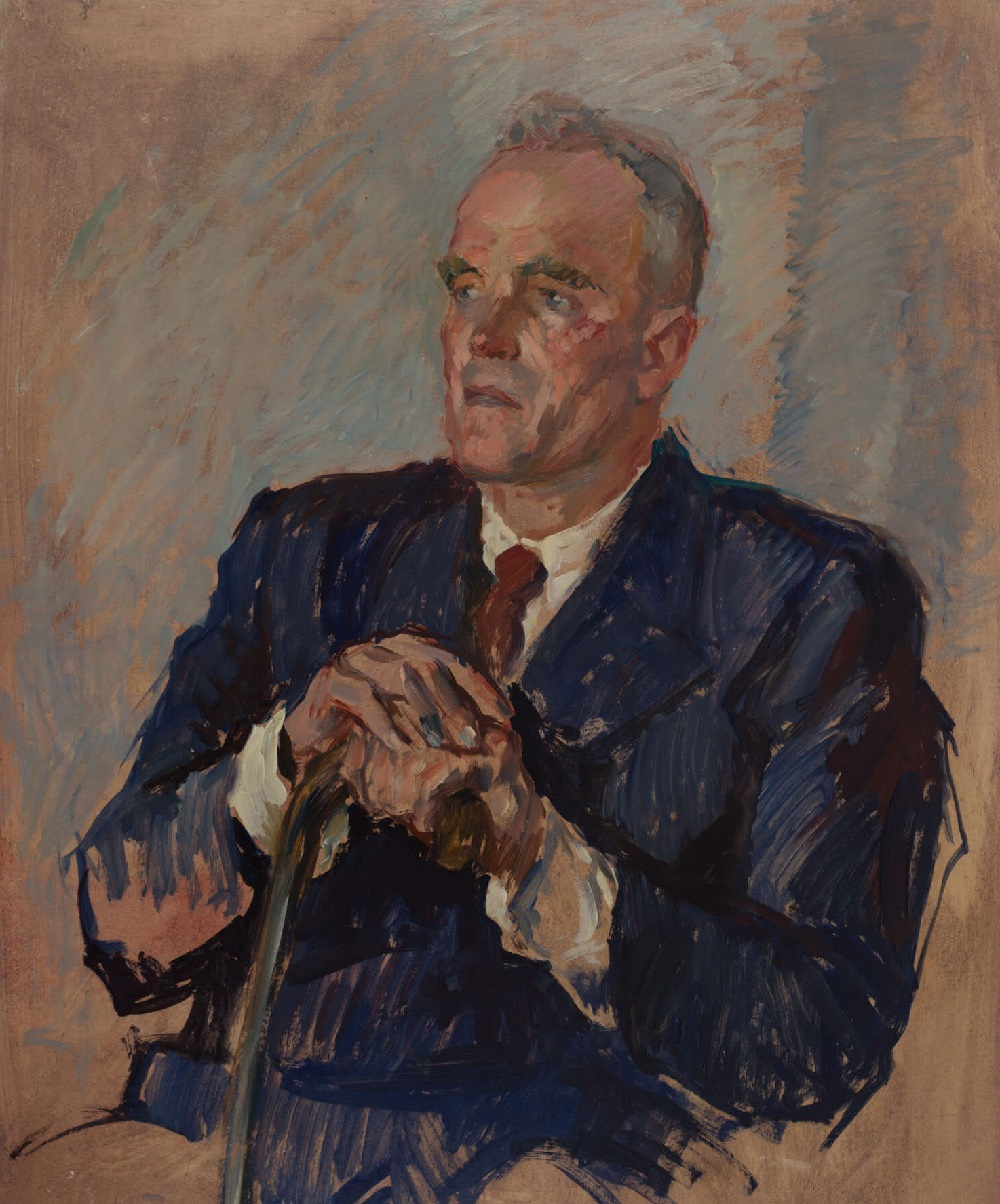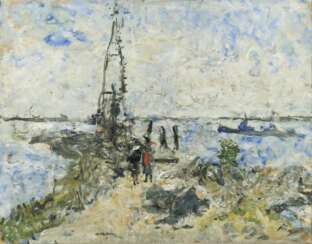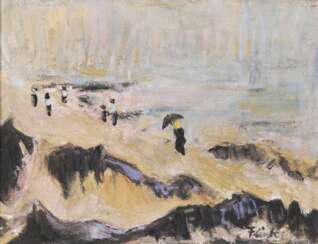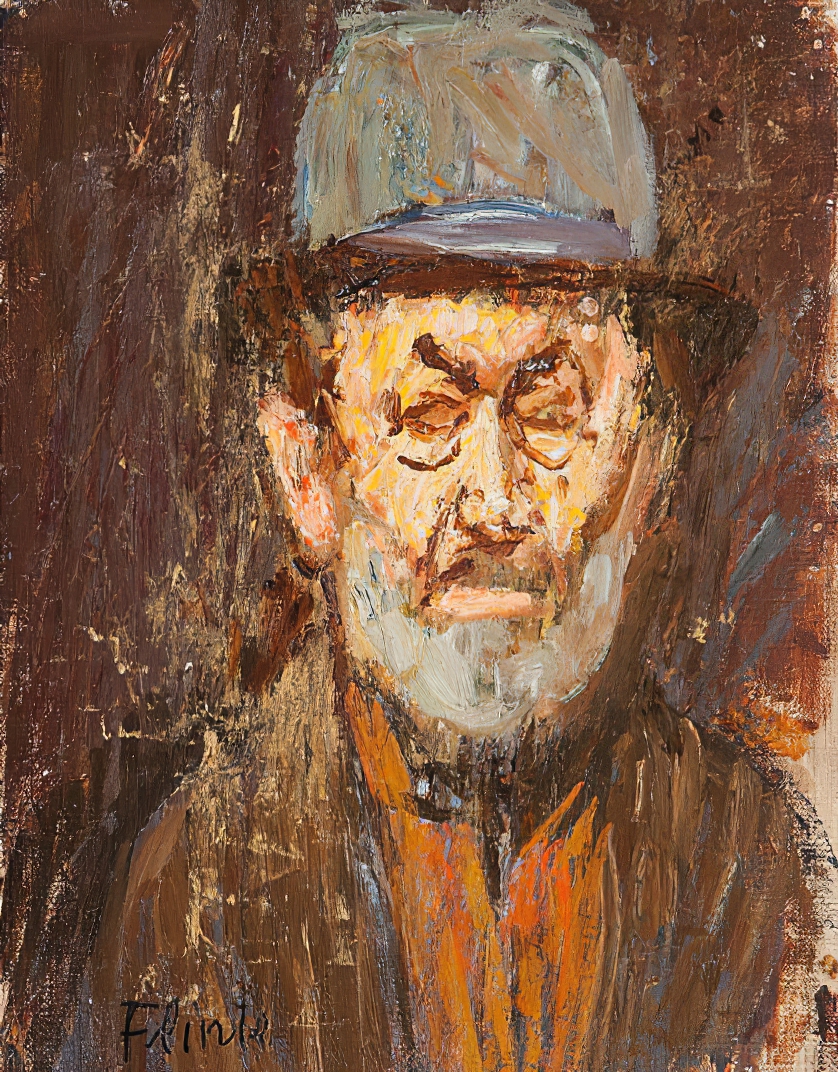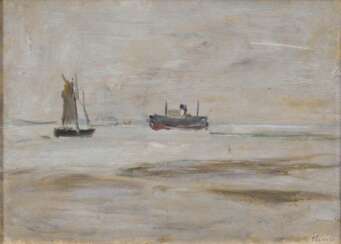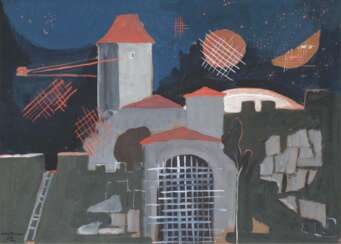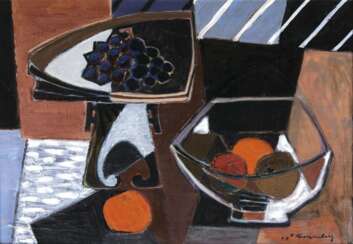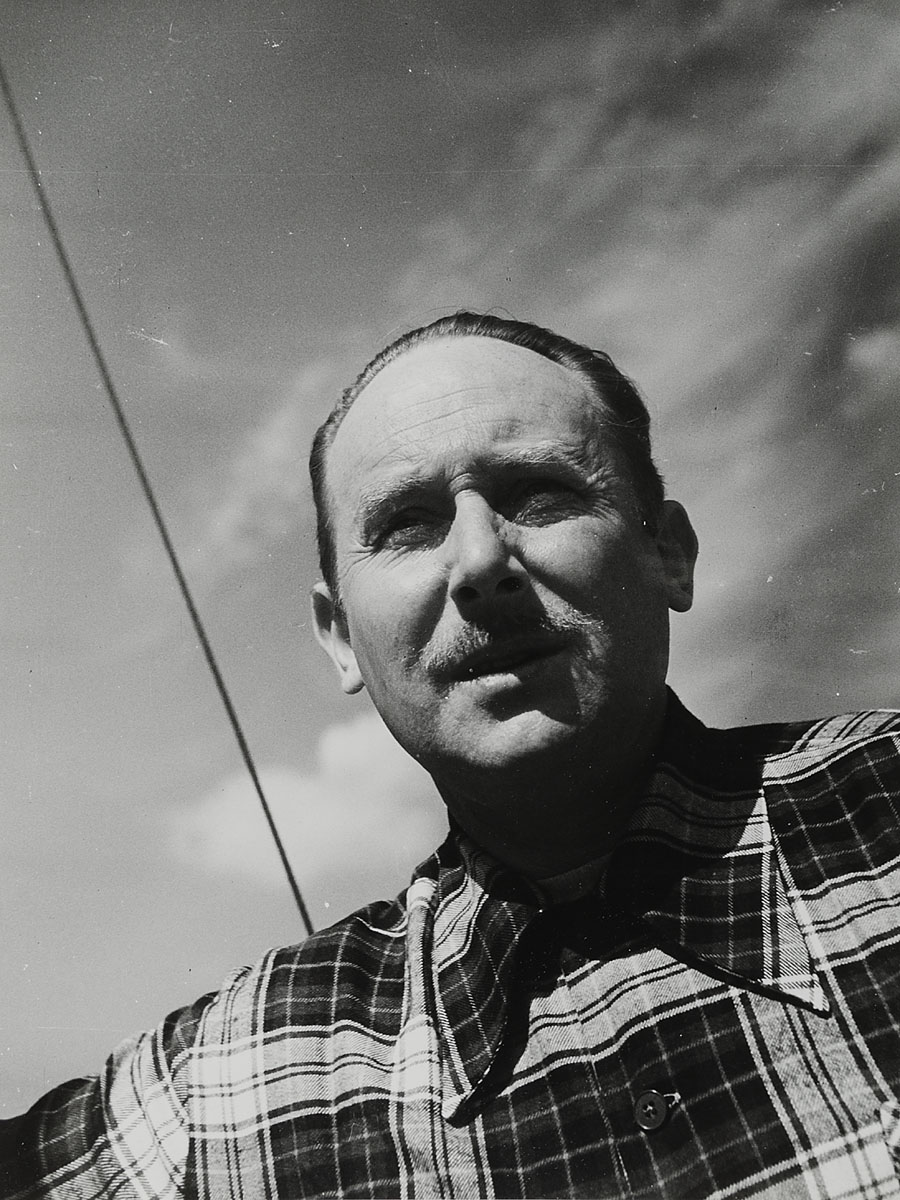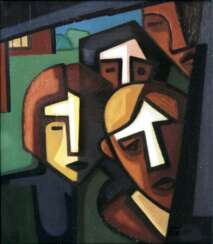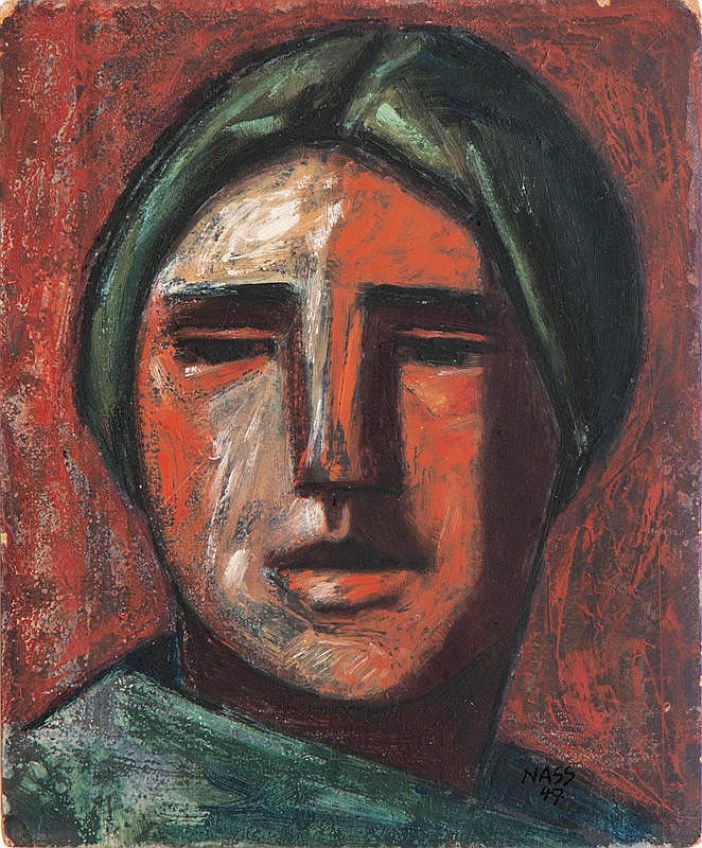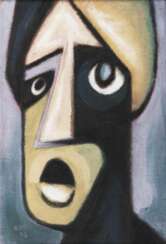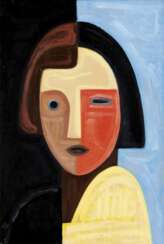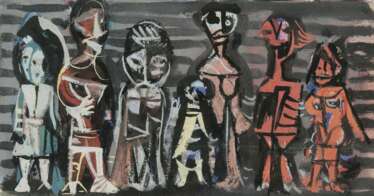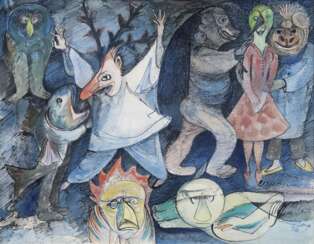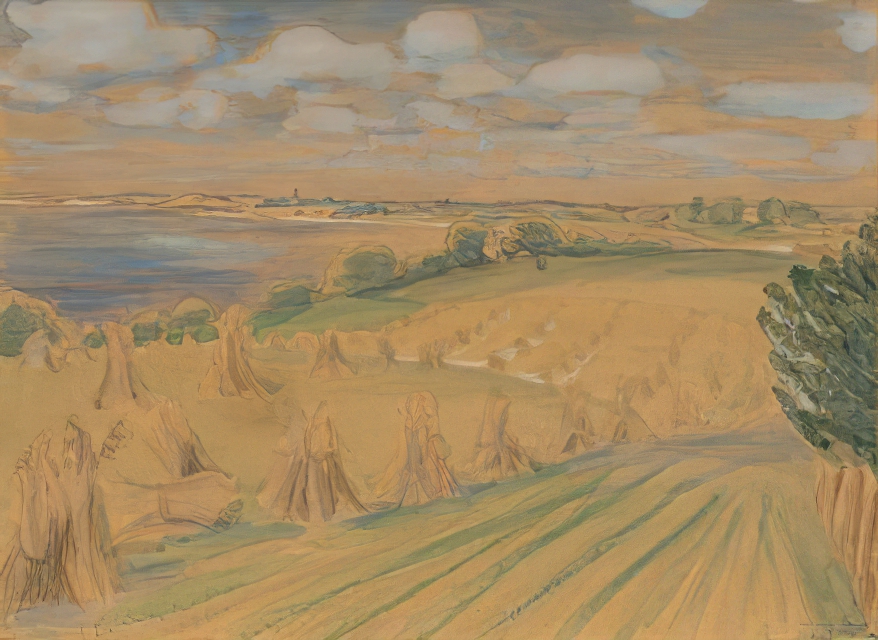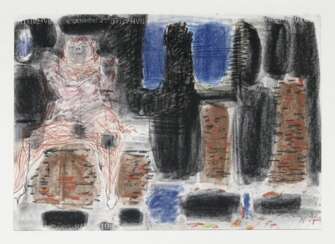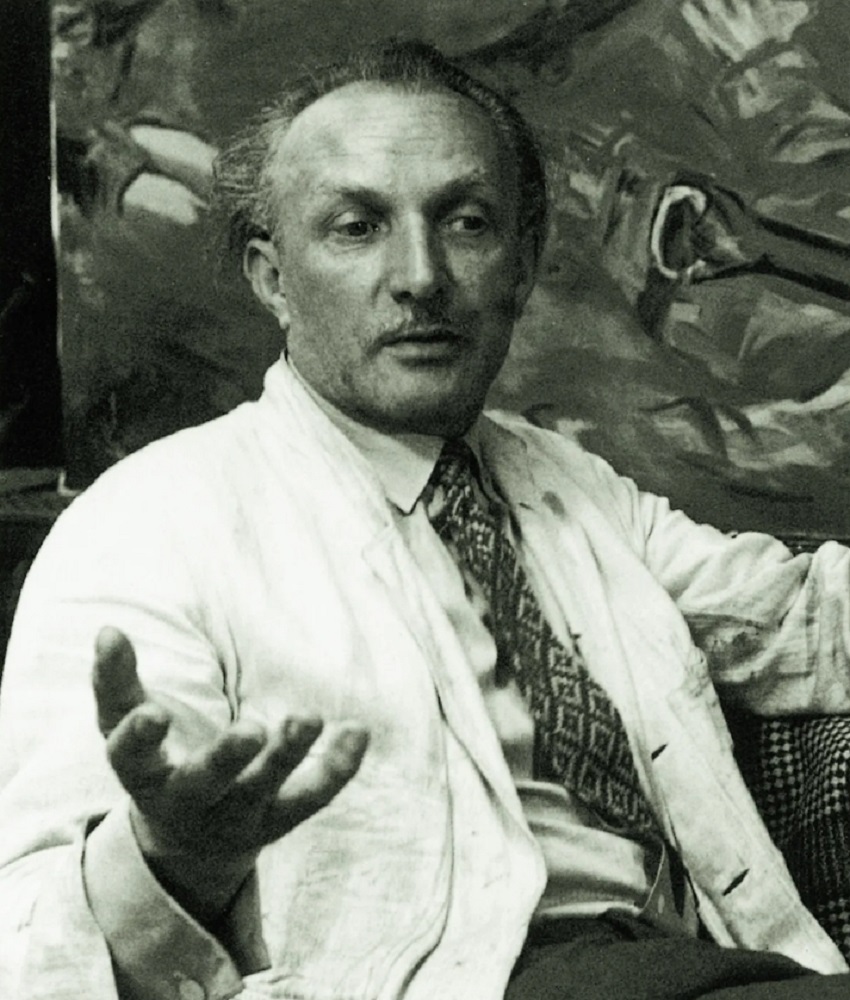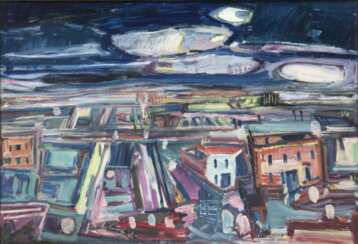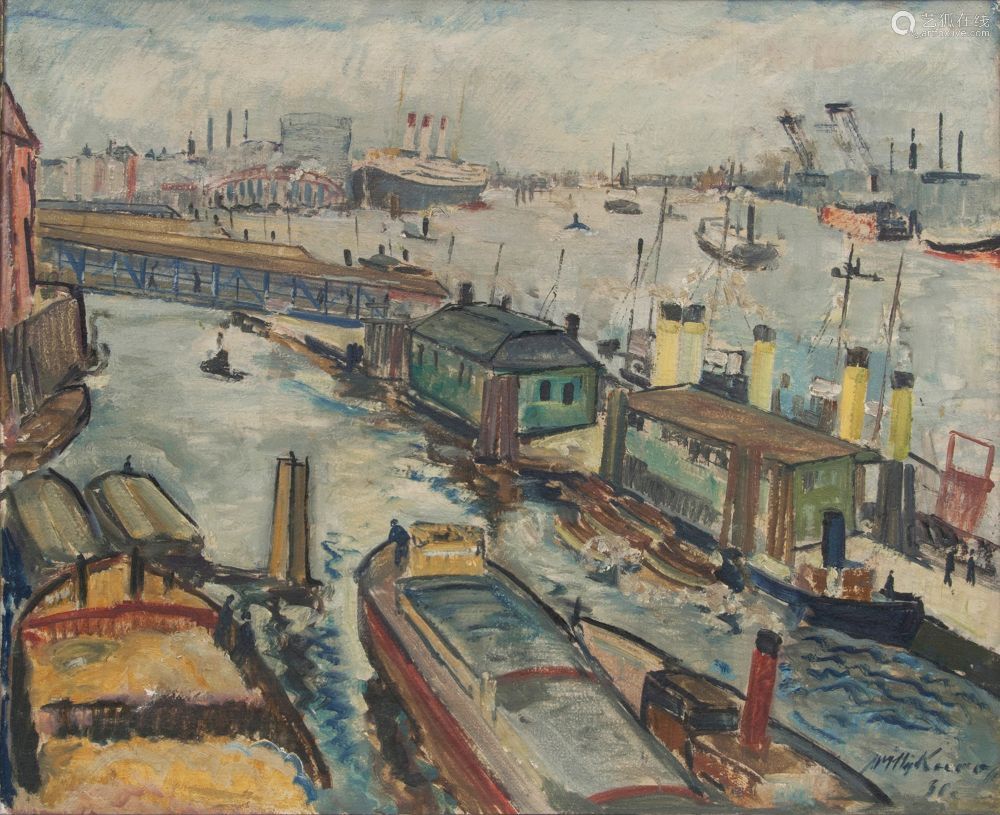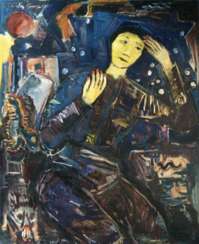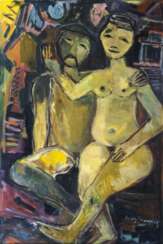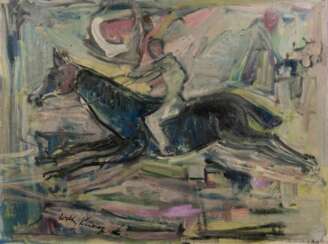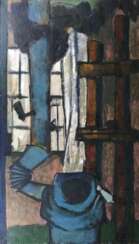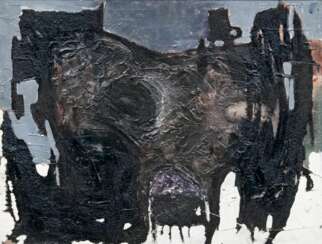
Art of the 20th century — Art and аntiques
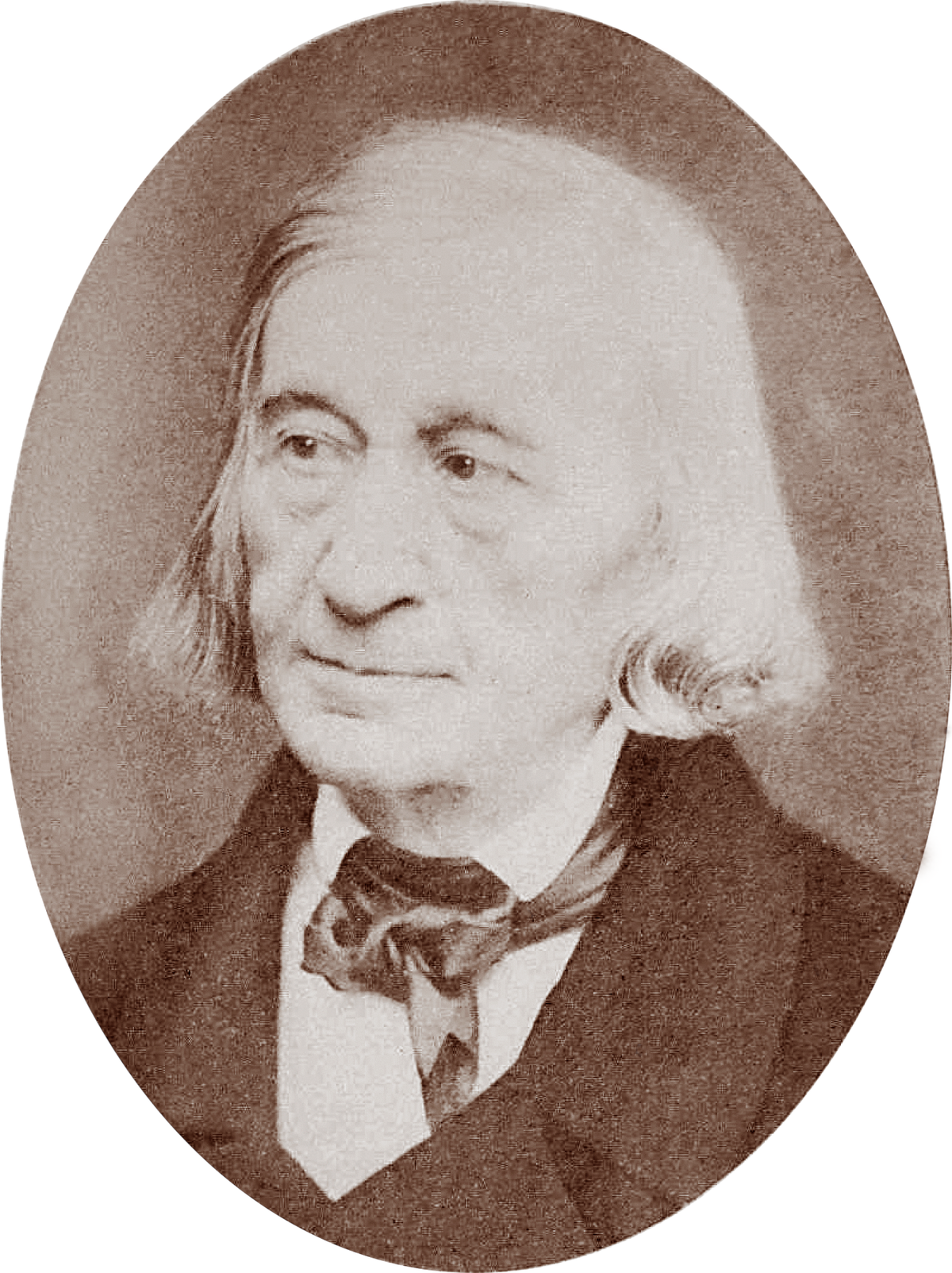
Willem Grimm was a German painter and graphic artist.
Already during his studies he made a name for himself, especially with his experimental graphics. After several guest exhibitions at the Hamburg Secession, he became an official member in 1929/30. In the early 1930s, at the age of 27, he was already one of Hamburg's most important artists.
In addition to classical genres such as portraits, landscapes and still lifes, Grimm worked from 1931 on the Rummelpott-Szenen motif, which in time became characteristic of his work.
The National Socialist repressions affected Willem Grimm less than many of his fellow artists. Still, in 1937 seven of Grimm's works were confiscated from the Kunsthalle Hamburg, the Hamburg Arts and Crafts Museum and the Nissenhaus Husum Museum as part of the "Degenerate Art" campaign and subsequently destroyed.

Willem Grimm was a German painter and graphic artist.
Already during his studies he made a name for himself, especially with his experimental graphics. After several guest exhibitions at the Hamburg Secession, he became an official member in 1929/30. In the early 1930s, at the age of 27, he was already one of Hamburg's most important artists.
In addition to classical genres such as portraits, landscapes and still lifes, Grimm worked from 1931 on the Rummelpott-Szenen motif, which in time became characteristic of his work.
The National Socialist repressions affected Willem Grimm less than many of his fellow artists. Still, in 1937 seven of Grimm's works were confiscated from the Kunsthalle Hamburg, the Hamburg Arts and Crafts Museum and the Nissenhaus Husum Museum as part of the "Degenerate Art" campaign and subsequently destroyed.

Willem Grimm was a German painter and graphic artist.
Already during his studies he made a name for himself, especially with his experimental graphics. After several guest exhibitions at the Hamburg Secession, he became an official member in 1929/30. In the early 1930s, at the age of 27, he was already one of Hamburg's most important artists.
In addition to classical genres such as portraits, landscapes and still lifes, Grimm worked from 1931 on the Rummelpott-Szenen motif, which in time became characteristic of his work.
The National Socialist repressions affected Willem Grimm less than many of his fellow artists. Still, in 1937 seven of Grimm's works were confiscated from the Kunsthalle Hamburg, the Hamburg Arts and Crafts Museum and the Nissenhaus Husum Museum as part of the "Degenerate Art" campaign and subsequently destroyed.

Willem Grimm was a German painter and graphic artist.
Already during his studies he made a name for himself, especially with his experimental graphics. After several guest exhibitions at the Hamburg Secession, he became an official member in 1929/30. In the early 1930s, at the age of 27, he was already one of Hamburg's most important artists.
In addition to classical genres such as portraits, landscapes and still lifes, Grimm worked from 1931 on the Rummelpott-Szenen motif, which in time became characteristic of his work.
The National Socialist repressions affected Willem Grimm less than many of his fellow artists. Still, in 1937 seven of Grimm's works were confiscated from the Kunsthalle Hamburg, the Hamburg Arts and Crafts Museum and the Nissenhaus Husum Museum as part of the "Degenerate Art" campaign and subsequently destroyed.
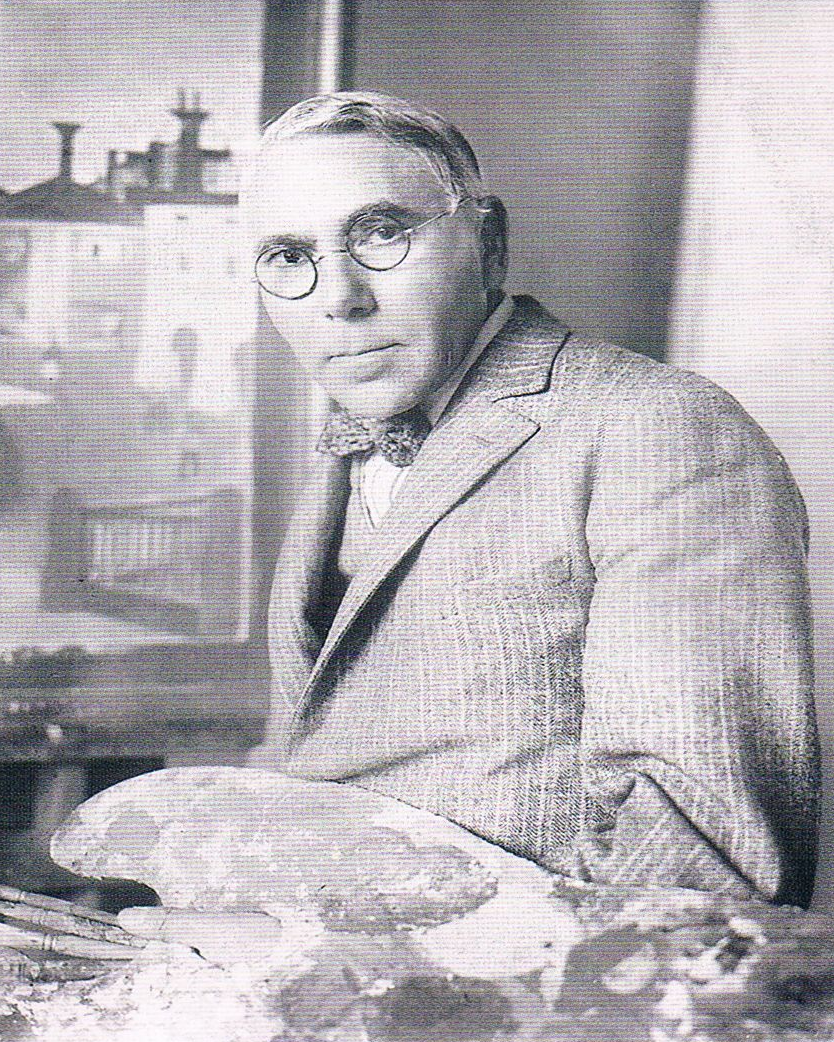
César Klein was a German Expressionist painter and designer, probably best known as one of the founders the November Group and the Arbeitsrat für Kunst. He is associated with the Düsseldorf school of painting.
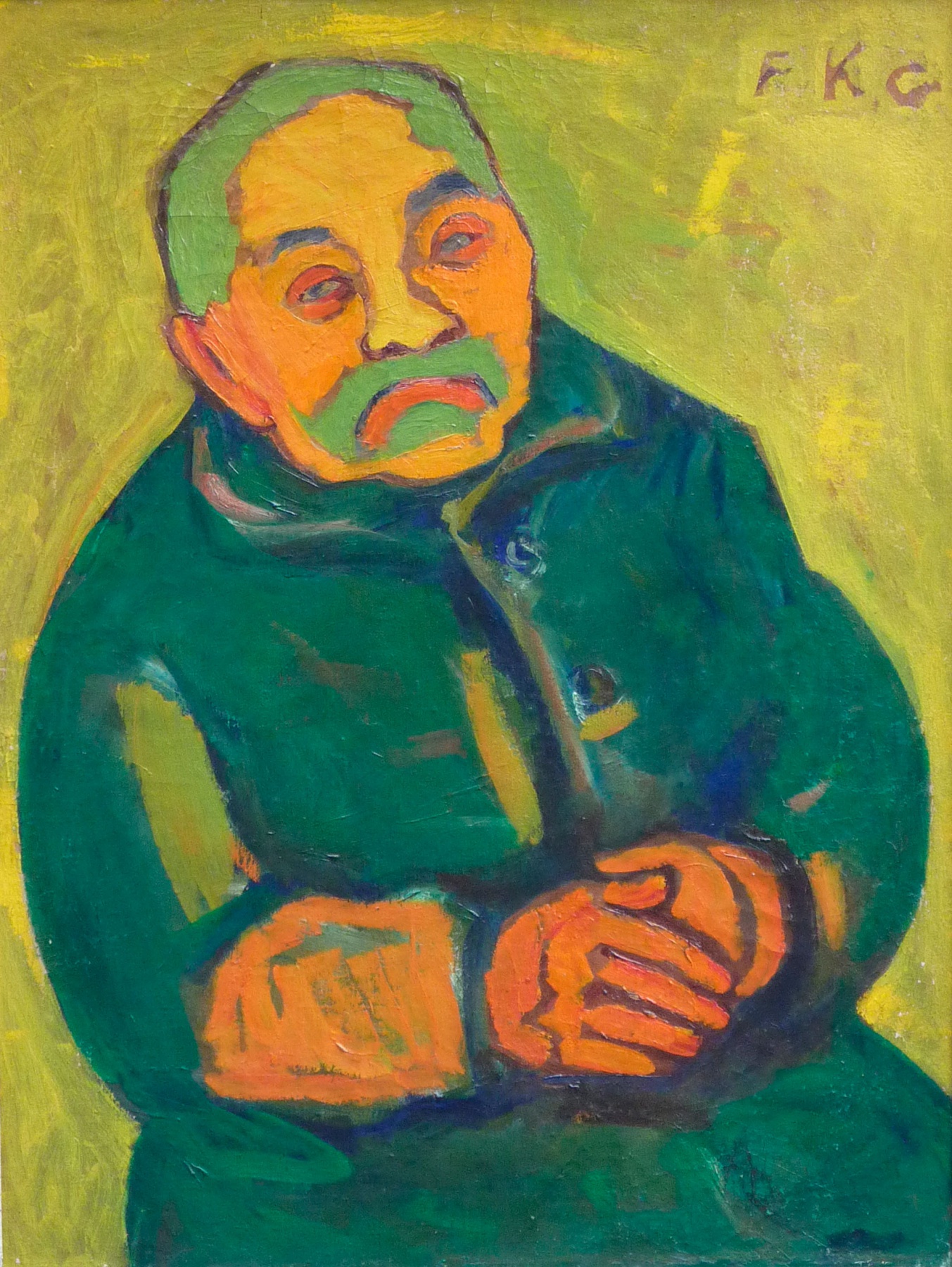
Friedrich Karl Gotsch, actually Friedrich Karl Müller, was a German painter and graphic artist.
After a phase of intense research into Picasso's cubism and experimentation with abstract techniques, the artist developed "late expressionism", which was typical of his work. Even during his lifetime, Gotsch was highly respected as one of the few painters of his generation who painted representational pictures. He also participated in numerous exhibitions and received renowned awards.

Friedrich Karl Gotsch, actually Friedrich Karl Müller, was a German painter and graphic artist.
After a phase of intense research into Picasso's cubism and experimentation with abstract techniques, the artist developed "late expressionism", which was typical of his work. Even during his lifetime, Gotsch was highly respected as one of the few painters of his generation who painted representational pictures. He also participated in numerous exhibitions and received renowned awards.
